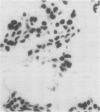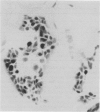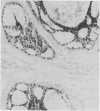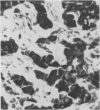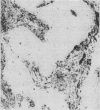Abstract
Two monoclonal antibodies recognising epitopes associated with oestrogen receptor protein were evaluated against the assayable soluble oestrogen receptor concentration in a series of 149 breast carcinomas. One antibody (anti-ER) recognises the hormone binding unit of oestrogen receptor and gives nuclear staining; the other antibody (anti-D5) was raised to a component of soluble oestrogen receptor and gives cytoplasmic staining. To minimise variations attributable to tumour heterogeneity and sampling error immunohistology using the two monoclonal antibodies, radioligand binding assays, enzyme immunoassays, and quantitative histology were done on adjacent frozen sections. Thirty nine per cent, 48%, 54%, and 43% of the tumours were found to be oestrogen receptor positive by radioligand binding assay, anti-ER and anti-D5 immunohistology, and enzyme immunoassay, respectively. Strong correlations (p less than 0.0005) were found between anti-ER immunohistology and the radioligand binding assay. Only weak correlations were found between anti-D5 immunohistology and the results of other assay methods for oestrogen receptor. Nuclear staining of human breast cancers with the anti-ER monoclonal antibody thus seems to be an acceptable alternative to biochemical assays, with the additional advantage of showing intercellular and regional heterogeneity for oestrogen receptor content.
Full text
PDF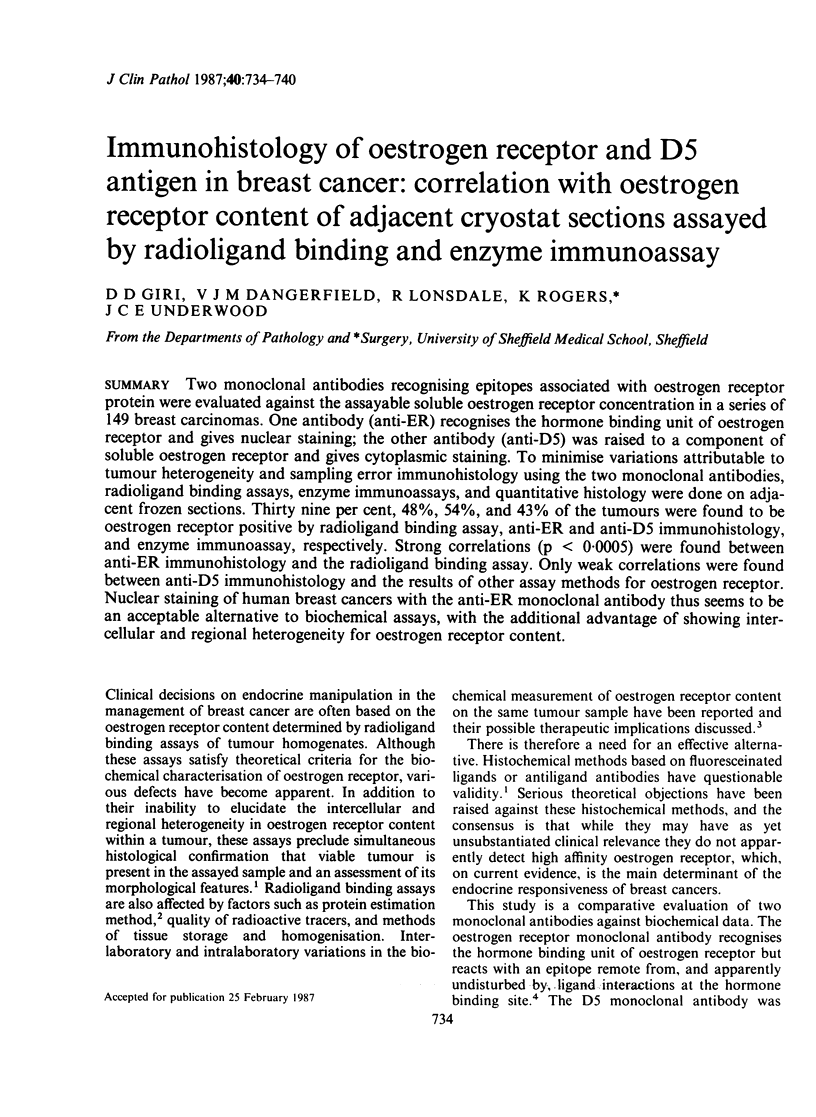
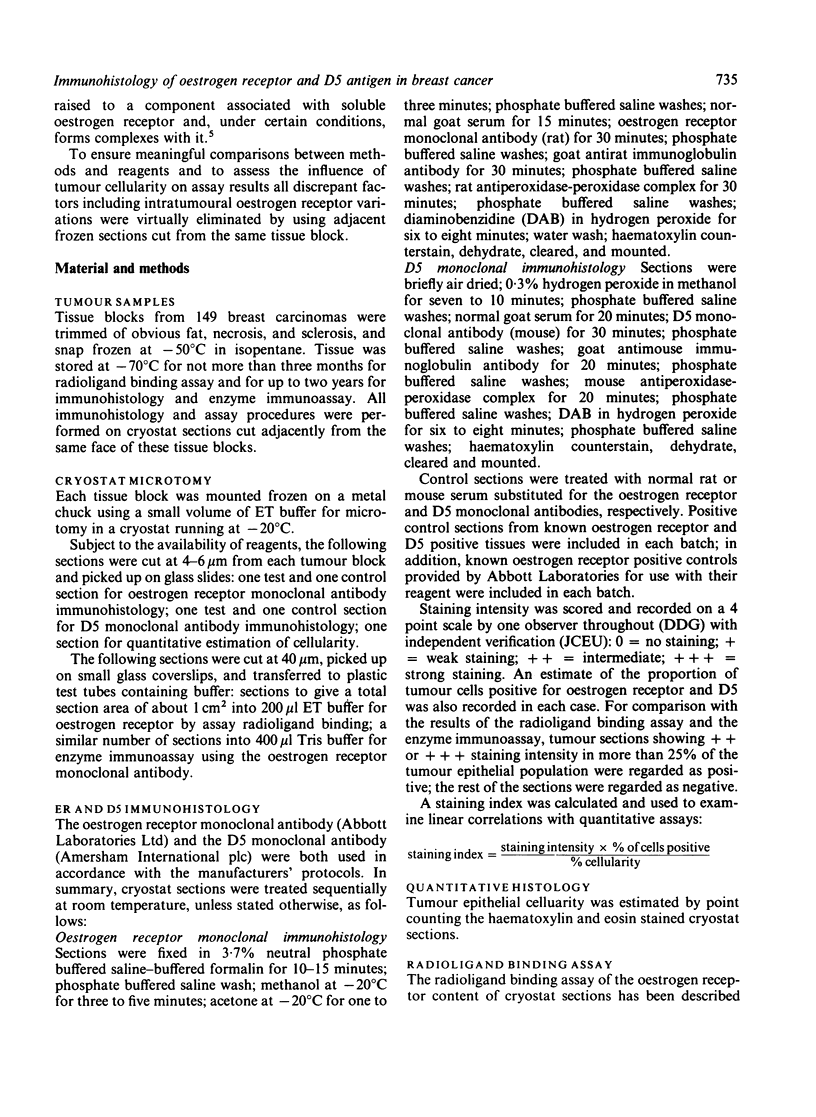
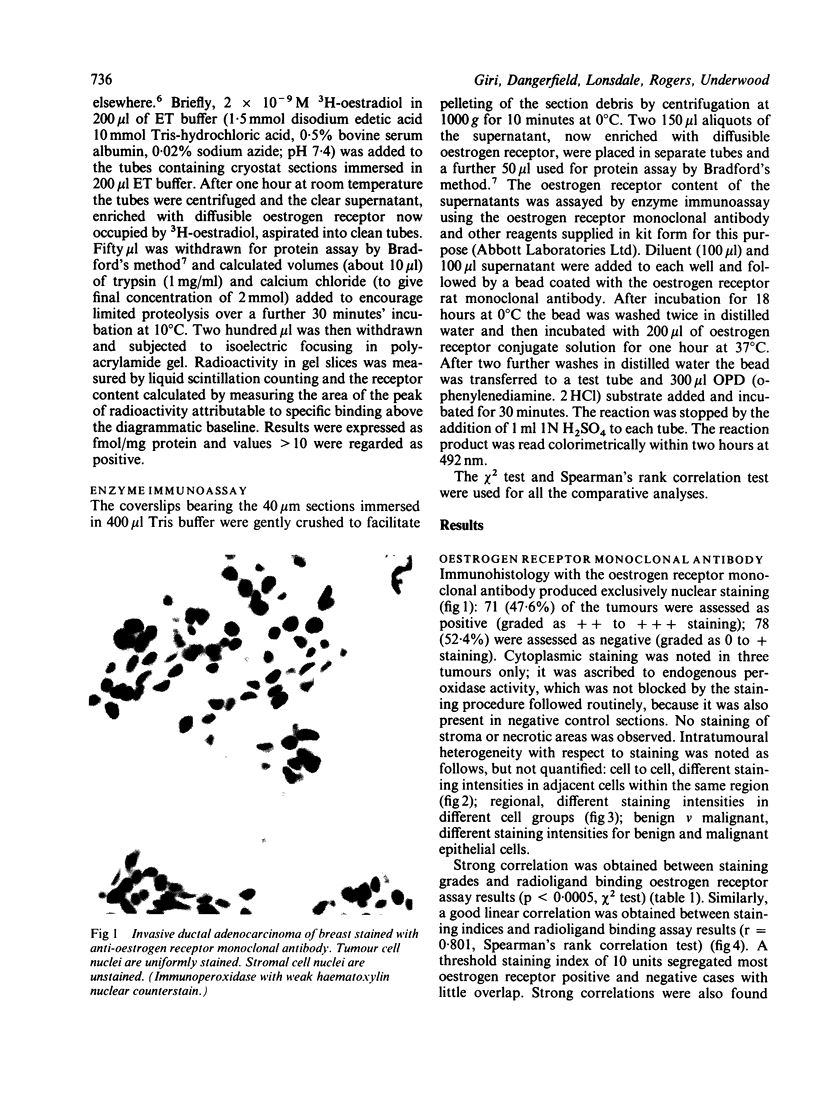
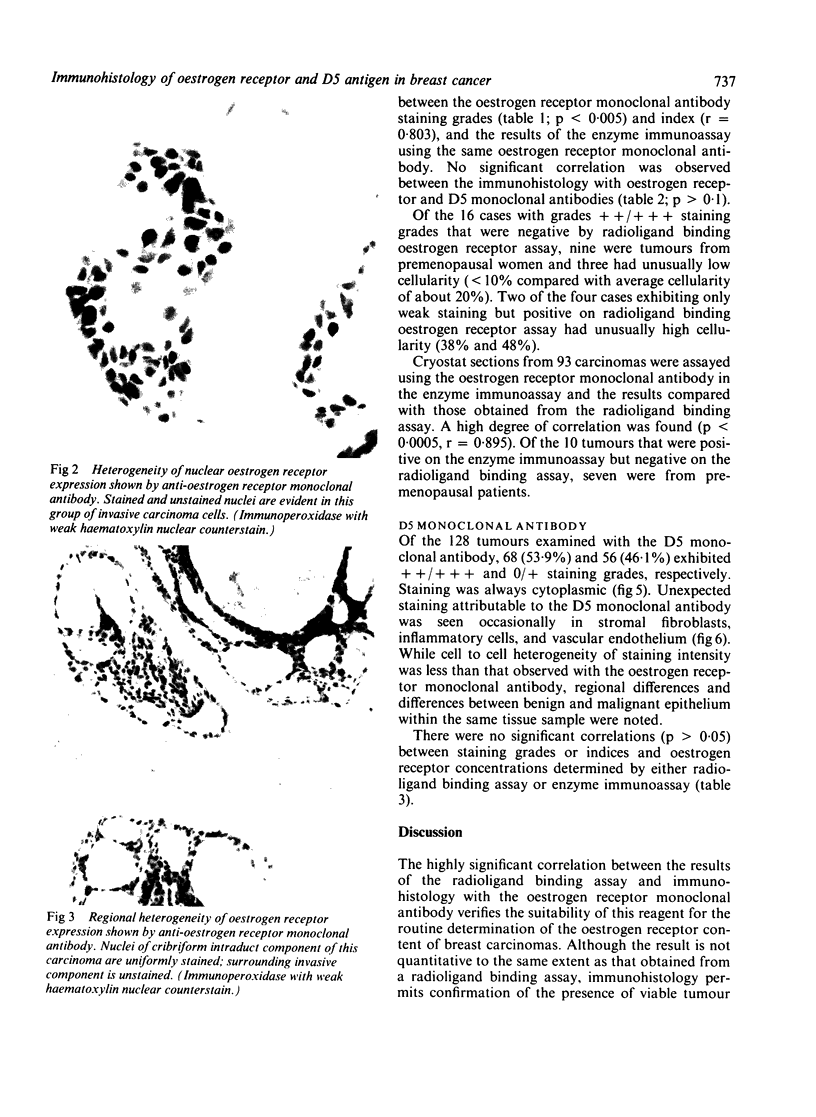
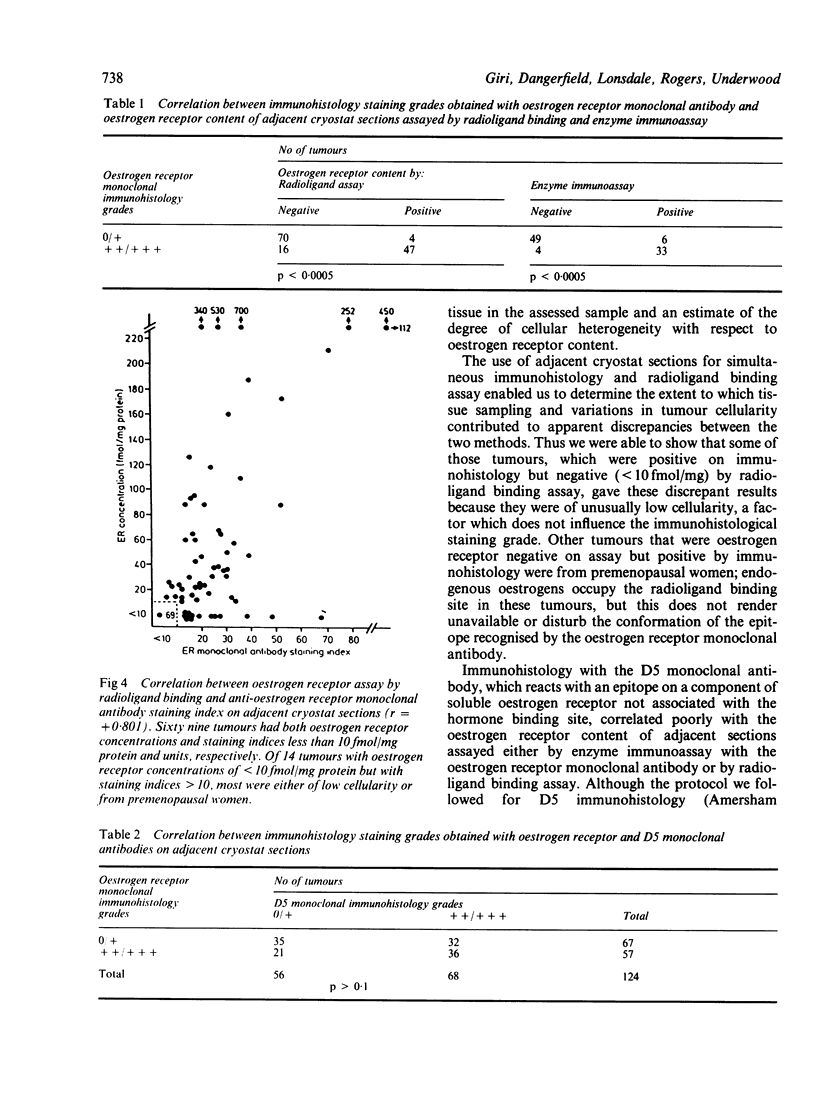
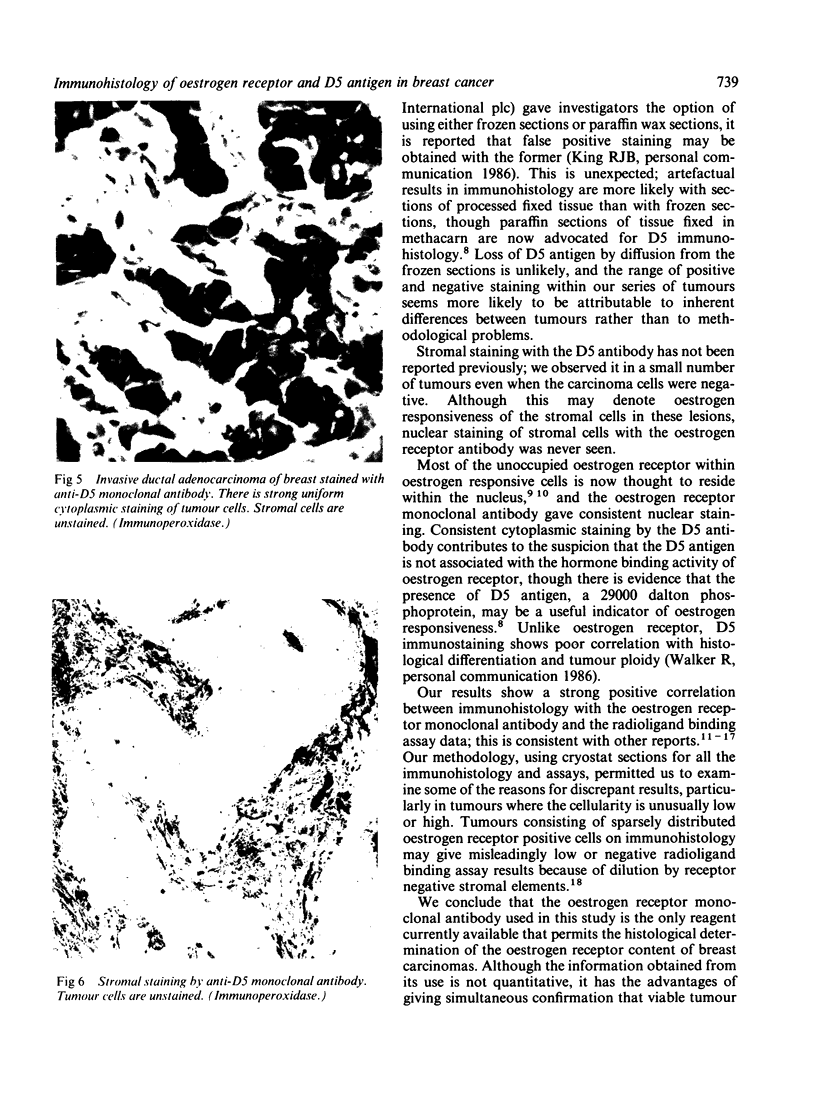
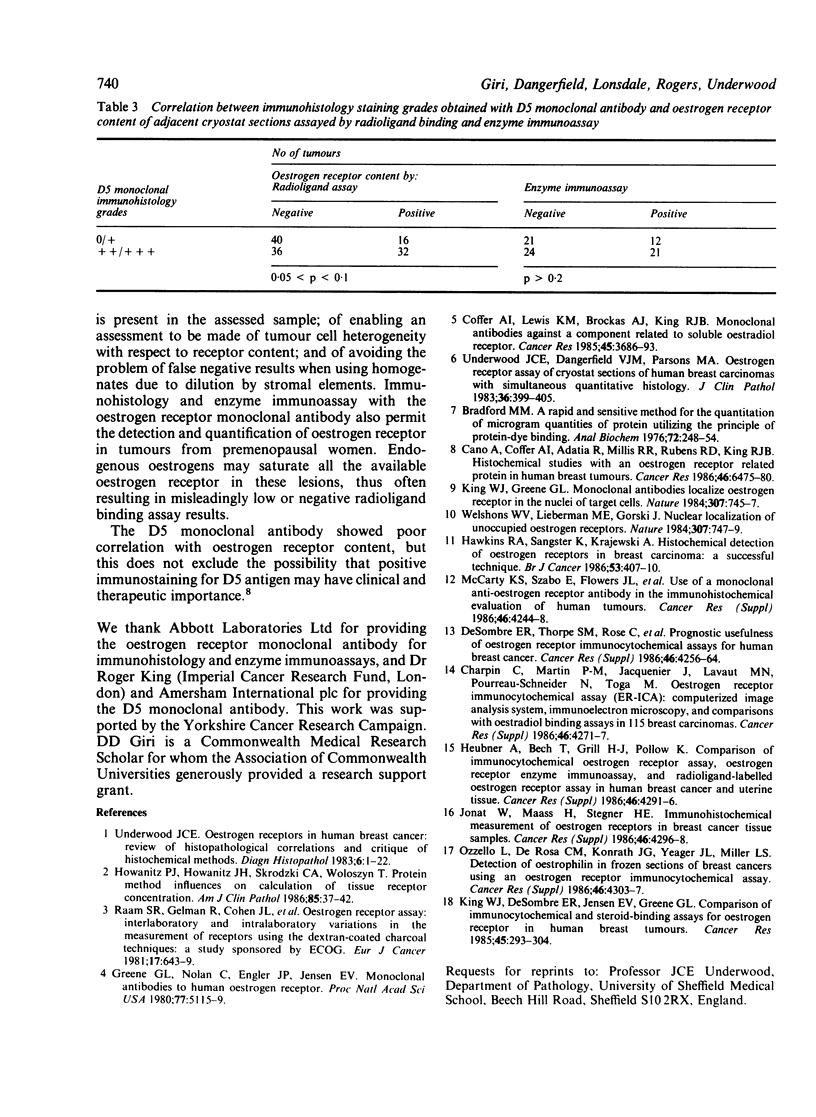
Images in this article
Selected References
These references are in PubMed. This may not be the complete list of references from this article.
- Bradford M. M. A rapid and sensitive method for the quantitation of microgram quantities of protein utilizing the principle of protein-dye binding. Anal Biochem. 1976 May 7;72:248–254. doi: 10.1016/0003-2697(76)90527-3. [DOI] [PubMed] [Google Scholar]
- Cano A., Coffer A. I., Adatia R., Millis R. R., Rubens R. D., King R. J. Histochemical studies with an estrogen receptor-related protein in human breast tumors. Cancer Res. 1986 Dec;46(12 Pt 1):6475–6480. [PubMed] [Google Scholar]
- Coffer A. I., Lewis K. M., Brockas A. J., King R. J. Monoclonal antibodies against a component related to soluble estrogen receptor. Cancer Res. 1985 Aug;45(8):3686–3693. [PubMed] [Google Scholar]
- Greene G. L., Nolan C., Engler J. P., Jensen E. V. Monoclonal antibodies to human estrogen receptor. Proc Natl Acad Sci U S A. 1980 Sep;77(9):5115–5119. doi: 10.1073/pnas.77.9.5115. [DOI] [PMC free article] [PubMed] [Google Scholar]
- Hawkins R. A., Sangster K., Krajewski A. Histochemical detection of oestrogen receptors in breast carcinoma: a successful technique. Br J Cancer. 1986 Mar;53(3):407–410. doi: 10.1038/bjc.1986.66. [DOI] [PMC free article] [PubMed] [Google Scholar]
- Howanitz P. J., Howanitz J. H., Skrodzki C. A., Woloszyn T. Protein method influences on calculation of tissue receptor concentration. Am J Clin Pathol. 1986 Jan;85(1):37–42. doi: 10.1093/ajcp/85.1.37. [DOI] [PubMed] [Google Scholar]
- King W. J., Greene G. L. Monoclonal antibodies localize oestrogen receptor in the nuclei of target cells. Nature. 1984 Feb 23;307(5953):745–747. doi: 10.1038/307745a0. [DOI] [PubMed] [Google Scholar]
- Underwood J. C., Dangerfield V. J., Parsons M. A. Oestrogen receptor assay of cryostat sections of human breast carcinomas with simultaneous quantitative histology. J Clin Pathol. 1983 Apr;36(4):399–405. doi: 10.1136/jcp.36.4.399. [DOI] [PMC free article] [PubMed] [Google Scholar]
- Underwood J. C. Oestrogen receptors in human breast cancer: review of histopathological correlations and critique of histochemical methods. Diagn Histopathol. 1983 Jan-Mar;6(1):1–22. [PubMed] [Google Scholar]
- Welshons W. V., Lieberman M. E., Gorski J. Nuclear localization of unoccupied oestrogen receptors. Nature. 1984 Feb 23;307(5953):747–749. doi: 10.1038/307747a0. [DOI] [PubMed] [Google Scholar]



